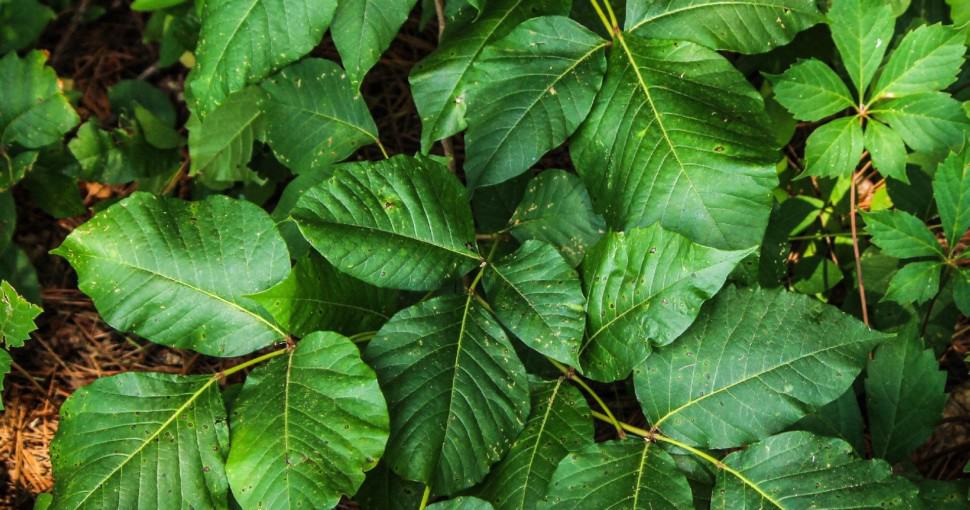Wisconsin has an abundant variety of flora, and summer is a great time to explore it all! If you love outdoor activities such as camping, hiking, or biking, you will surely have lots of fun here! However, before you head out, it is important to be aware of poisonous plants in Wisconsin, just in case you stumble upon any.
Contents
- 1. Cow parsnip (Heracleum maximum)
- 2. Poison Ivy (Toxicodendron radicans)
- 3. Stinging Nettle (Urtica dioica)
- 4. White Snakeroot (Ageratina altissima)
- 5. Poison Hemlock (Conium maculatum)
- 6. Grecian Foxglove (Digitalis lanata)
- 7. Arrowhead (Syngonium podophyllum)
- 8. Bittersweet/Woody Nightshade (Solanum dulcamara)
- 9. Chrysanthemum (Chrysanthemum)
- 10. Daphne (Daphne)
- 11. Dumb Canes (Dieffenbachia)
- 12. Elephant’s Ear (Alocasia x ‘Calidora’)
- 13. Jack-in-the-pulpit/Indian Turnip (Arisaema triphyllum)
- 14. Larkspur (Delphinium)
- 15. Lily of the Valley (Convallaria majalis)
- 16. Mayapples (Podophyllum peltatum)
- 17. Swiss Cheese Plant (Monstera deliciosa)
- 18. Mother-In Law-Tongue/Snake Plant (Dracaena trifasciata)
- 19. Poison Sumac (Toxicodendron vernix)
- 20. Azaleas (Rhododendron)
- 21. Giant Hogweed (Heracleum mantegazzianum)
When you’re aware of these plants, you will be able to avoid the damage that comes with exposure to them. Toxic plants should not be touched or ingested. They can cause mild to severe symptoms, depending on the type of plant. Moreover, toxic plants can be harmful to humans as well as pets. So, if you decide to take your pet along with you to your next outdoor adventure, do keep a sharp eye out for poisonous plants at all times.
In case of exposure to toxic plants, or if you or your pet accidentally ingests one, urgent medical attention will be a must to alleviate symptoms. We have compiled a list of 21 Poisonous Plants in Wisconsin below. If you are planning to visit Wisconsin or already live there and are an outdoor enthusiast, do give it a read. Also, remember that it is always better to be safe than sorry!
1. Cow parsnip (Heracleum maximum)
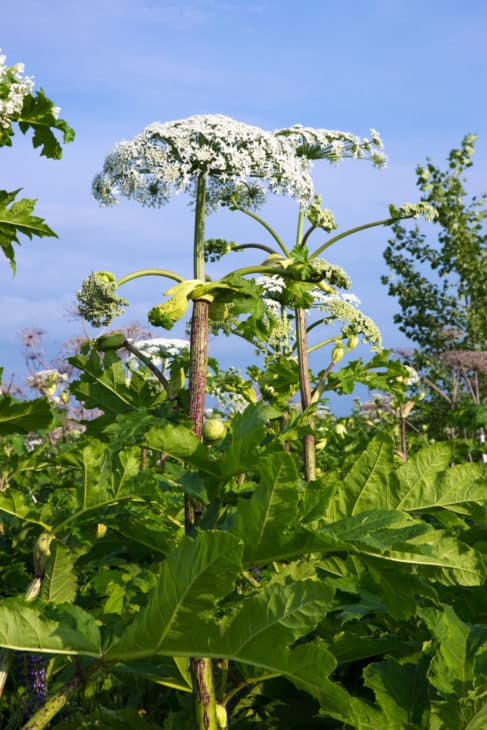
Cow Parsnip is also known as American cow-parsnip or Heracleum Lanatum. The term Heracleum comes from Heracles, referring to the plant’s large size. This plant is known to cause nasty burns that can take weeks or even months to heal. At times, these burns can also leave scars. If you happen to touch the cow parsnip at any time, wash the area with water and soap immediately and protect it from direct sunlight for up to 48 hours
2. Poison Ivy (Toxicodendron radicans)
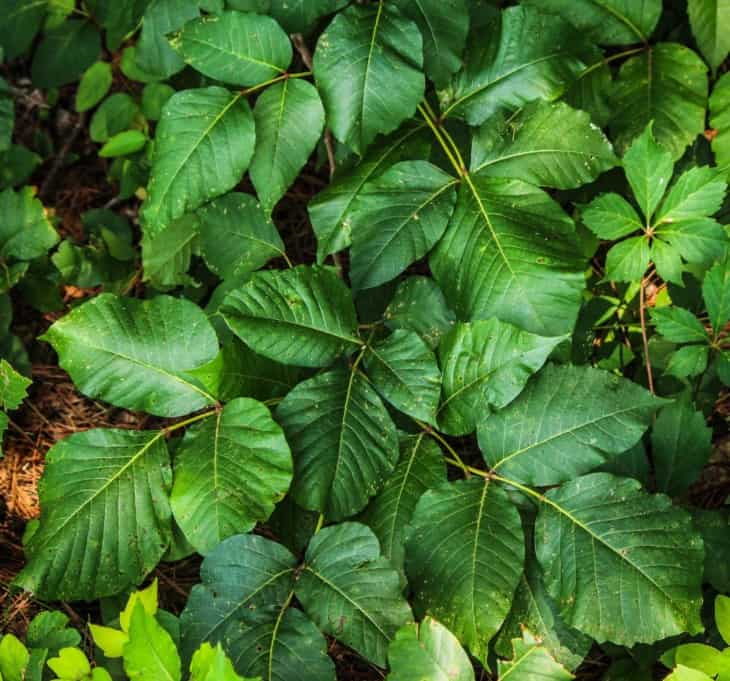
Poison Ivy is a flowering plant belonging to the Toxicodendron genus. It is well known for urushiol-induced contact dermatitis. This is a painful and itchy rash caused by touching the plant. The rash is primarily caused due to the urushiol present in the sap of the plant. Research has shown 15 to 25 percent of people don’t get an allergic reaction to urushiol while others do. The rash caused by urushiol usually lasts between 5 to 12 days.
Related: Pros And Cons Of Ivy Plants For Coverage
3. Stinging Nettle (Urtica dioica)
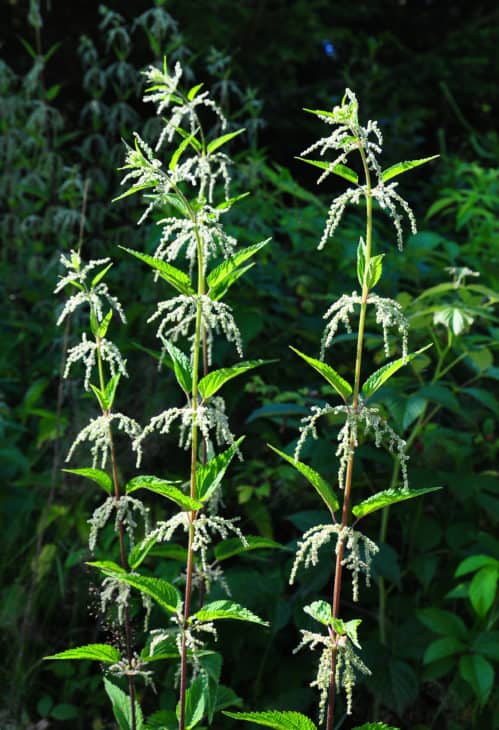
The Stinging Nettle is also known as the Common Nettle or Burn Nettle. This plant belongs to the Urticaceae family and is a perennial flowering plant. It had white and yellowish flowers and pointed leaves. If touched, the Stinging Nettle can cause burning, a rash, and tingling. However, symptoms don’t last more than 24 hours. The Stinging Nettle is also sometimes cooked and eaten and is safe to do so.
4. White Snakeroot (Ageratina altissima)
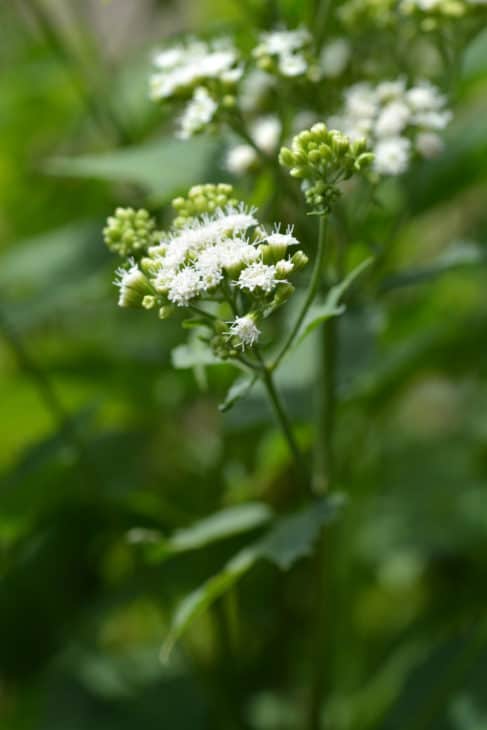
The White Snakeroot belongs to the Asteraceae family and is a poisonous perennial herb. It can grow up to 1.5 meters is found in bush thickets and the woods. The White Snakeroot usually blooms in mid to late summer or in the fall. This plant contains a toxin called tremetol. If ingested by cows, the cow’s milk and meat can become poisonous.
5. Poison Hemlock (Conium maculatum)
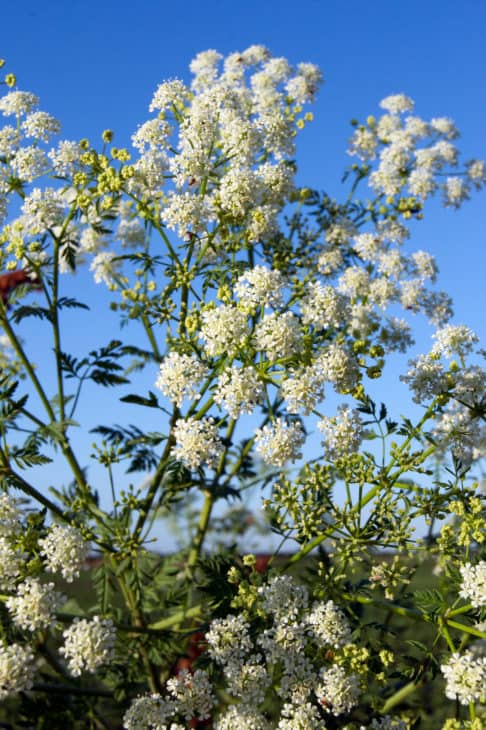
The Poison Hemlock or Wild Hemlock is a very poisonous herbaceous flowering plant. It is a hardy plant and can survive in many different types of environments. All parts of the Poison Hemlock are poisonous, but its roots and seeds are particularly poisonous if ingested. This plant has a distinctive odor that is rather unpleasant and carries with the wind.
6. Grecian Foxglove (Digitalis lanata)
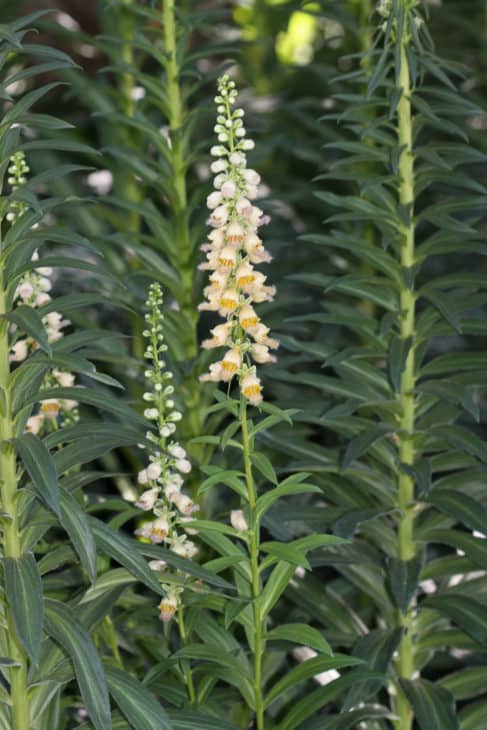
A species of Foxglove, this flowering plant belongs to the Plantaginaceae family. It is quite toxic and can cause severe poisoning. Symptoms of poisoning include a severe headache, dilated pupils, nausea, convulsions, and vomiting. The Grecian Foxglove is also harmful to animals. This toxic and invasive weed is present in the woodlands and grasslands of Wisconsin.
7. Arrowhead (Syngonium podophyllum)
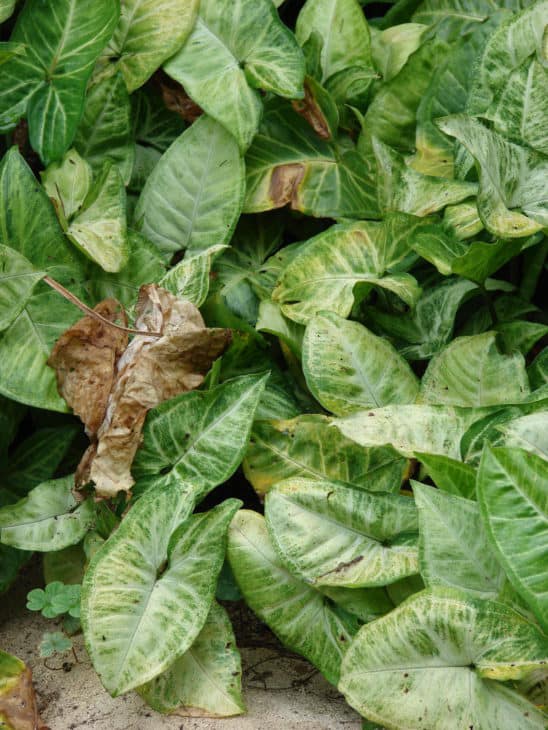
Arrowhead is a famous houseplant. Outdoors, it can grow over the trunks of jungle trees by holding on to its roots. If planted indoors, it can reach as high as 4.9 feet. If ingested, all parts of the Arrowhead are poisonous and can cause mouth pain. Gardeners and homeowners need to be vary of this plant as it can also cause eye damage and skin allergies upon contact.
8. Bittersweet/Woody Nightshade (Solanum dulcamara)
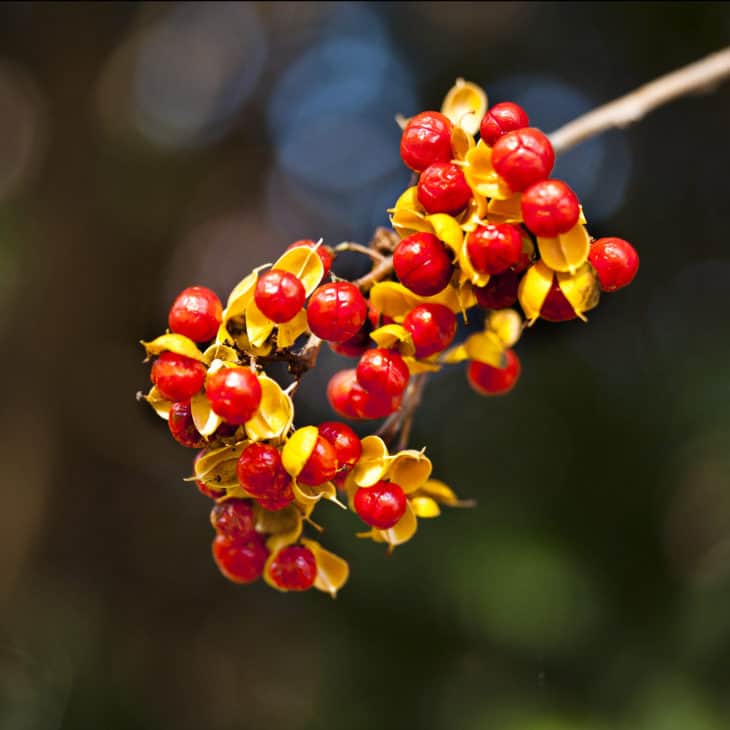
This herbaceous perennial vine can be found in a number of habitats such as scrublands, marshes, hedges, and woodlands. Bittersweet has arrow-shaped leaves and usually grows over 1-2 meters. With adequate support, it can grow as high as 4 meters. Bittersweet is toxic to livestock, pets, and humans. However, poisoning is not very common as it has a strong odor and can easily be avoided.
9. Chrysanthemum (Chrysanthemum)
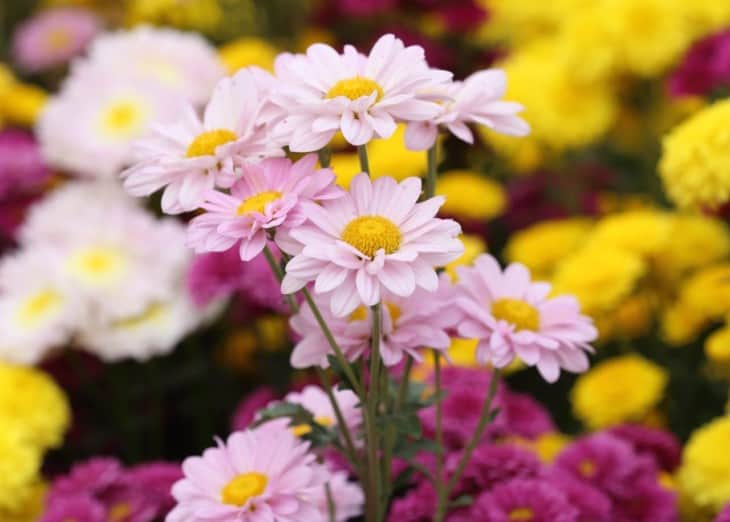
Chrysanthemums are flowering plants that are native to the Asteraceae family. All parts of the Chrysanthemum plant are toxic to mammals if ingested. This flower head is particularly toxic. Symptoms of toxicity include lack of coordination, diarrhea, vomiting, rashes, salivation, and nausea. Pyrethrin is a natural insecticide produced by this plant that is also toxic to cats, dogs, and horses if ingested.
10. Daphne (Daphne)
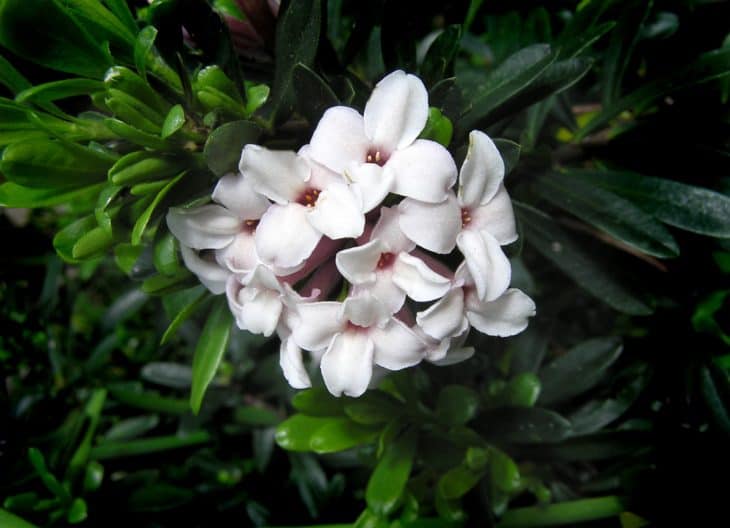
These plants are evergreen shrubs that belong to the Thymelaeacaea family. All parts of the Daphne can be poisonous, especially the berries that grow on them. If ingested, one can experience severe symptoms such as burning sensations in the mouth and upper intestinal tract, diarrhea, and gastroenteritis. In some instances, it can also cause damage to the kidneys and a coma.
11. Dumb Canes (Dieffenbachia)
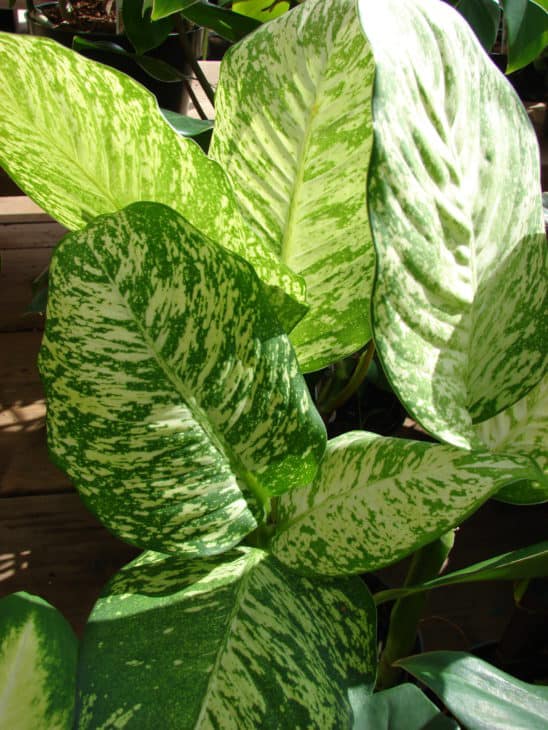
Some other names for this plant are Mother-in-law’s tongue and leopard lily. These plants belong to the Araceae family and are native to Mexico and the West Indies, where they are considered Ornamental plants for homes. It is a houseplant because of its shade and simple, alternate leaves. This plant contains calcium oxalate, which can be toxic if eaten. This plant is not severely toxic, but if your pet eats it, you should head off to the vet as soon as you can.
12. Elephant’s Ear (Alocasia x ‘Calidora’)
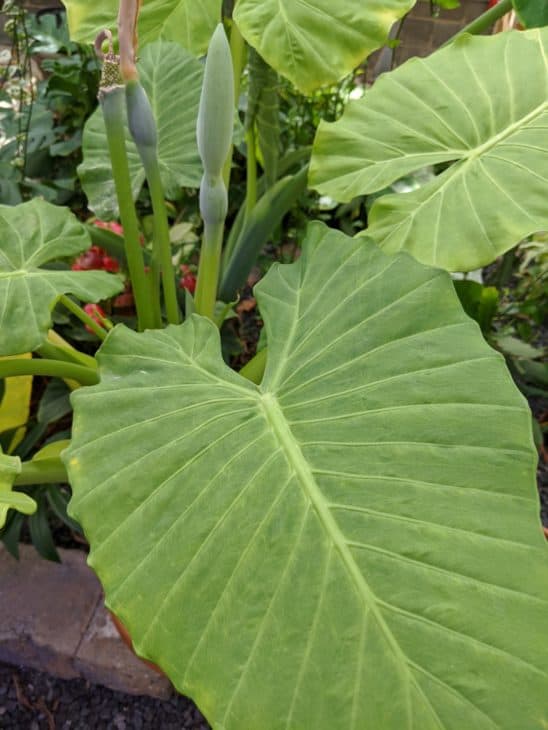
Elephant’s ears are tropical perennials plants known for their large leaves, which are heart-shaped and dramatic in appearance. They achieve their full size within two months and are usually planted in spring. The leaves can reach up to the size of 3 feet long and 2 feet wide in the tropics. These plants can be poisonous to children. Even touching the leaves can cause skin irritation and a rash. If the leaves are eaten, they can lead to the swelling of the mouth.
13. Jack-in-the-pulpit/Indian Turnip (Arisaema triphyllum)
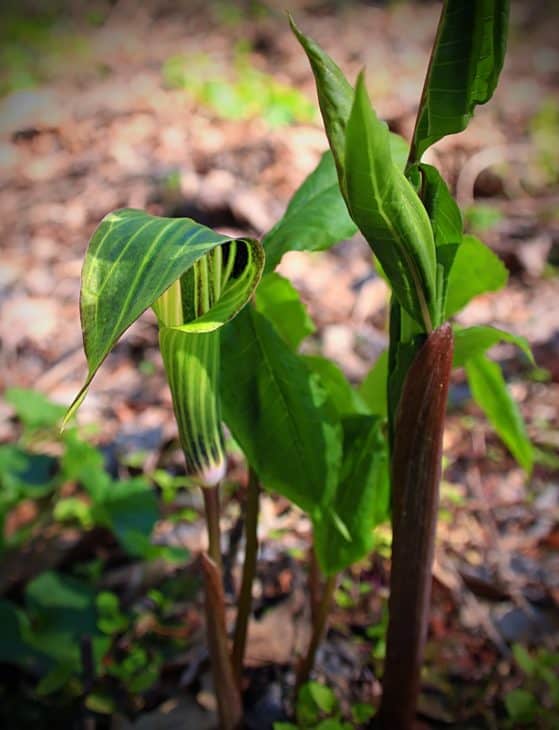
This plant is also called Jack in the pulpit, brown dragon, or Indian turnip. The leaves grow in a group of three at the top of one long stem, which is produced from corn. These plants are sometimes mistaken with poison ivy. The plant gives flowers from April to June and is pollinated by fungus gnats. This plant can be poisonous because of its ingredient calcium oxalate. This poison can cause blisters in the mouth, burning in the throat, diarrhea, nausea, and vomiting.
14. Larkspur (Delphinium)
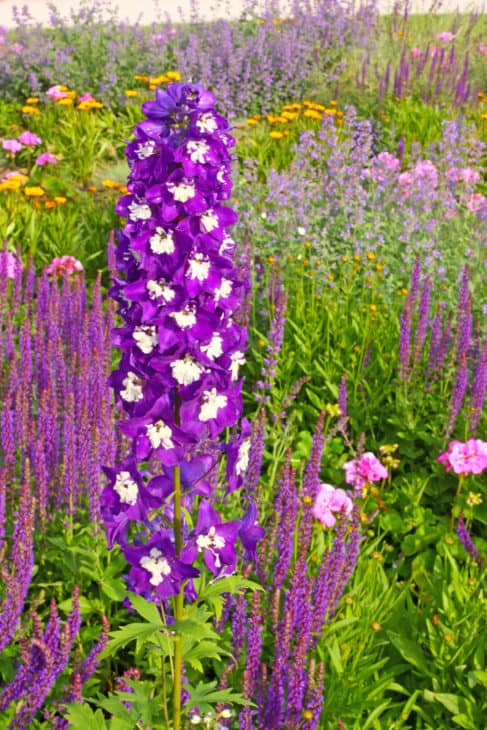
This plant grows beautiful cut flowers. The blue blossoms give beauty to any garden. It can start very easily from a seed and then reseed itself each year. Its height is 1 to 3 feet. It’s an annual plant and can be found in both blue and green foliage colors. The light, airy foliage also gives it a very soft fern-like effect. All parts of this plant are poisonous, and they contain a large number of toxic substances. There is no treatment for larkspur poisoning.
15. Lily of the Valley (Convallaria majalis)
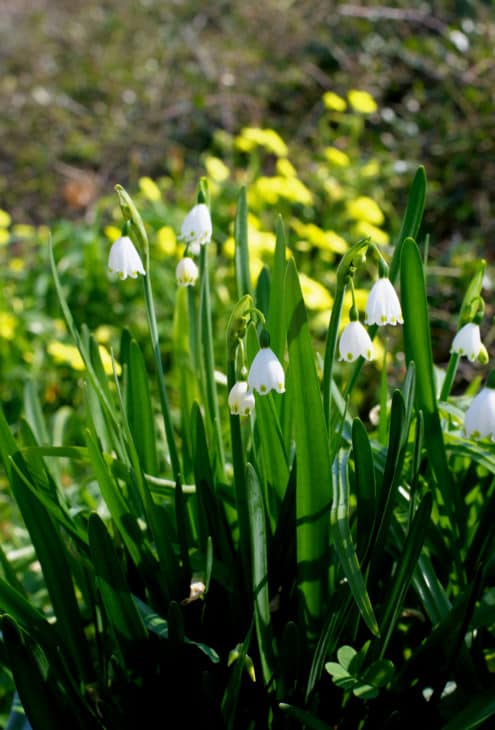
This is a woodland flowering plant that has sweet-smelling, bell-shaped white flowers. It is a herbaceous perennial plant with upright stems which can grow up to 15 – 30 cm long. This is a summer plant and likes soil that is sandy and acid to moderate alkaline. This plant is highly poisonous if consumed by man or any animal. Even its red berries are poisonous and, if eaten, can cause nausea, abdominal pain, and irregular heartbeats.
16. Mayapples (Podophyllum peltatum)
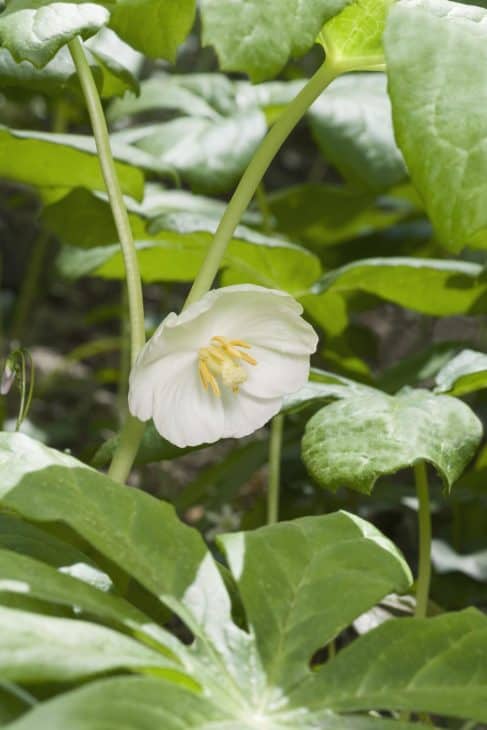
This is a common plant of deciduous forests. It can be mostly found in North America and grows in colonies from a single root. All parts of the plant can be toxic except for the fruit. It was also used by the Native Americans for the purpose of medicine. The stem is about 12 -18-inch-tall and has umbrella-like leaves. Mayapples grow in very dense colonies.
17. Swiss Cheese Plant (Monstera deliciosa)
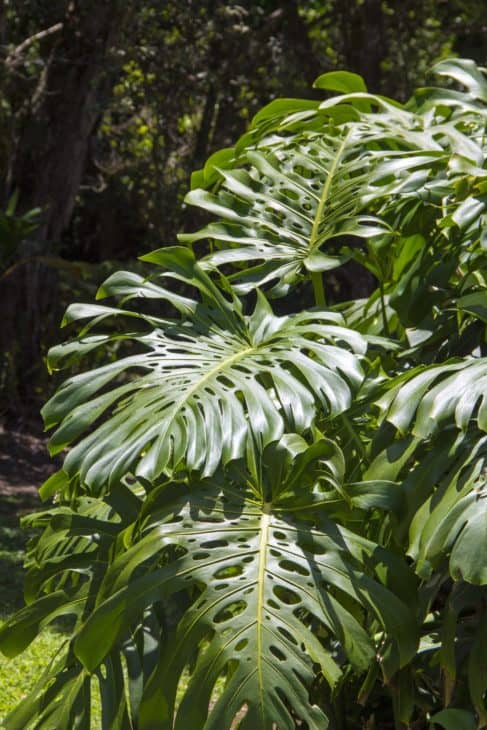
This beautiful plant has a woody vine and can reach about 70 feet tall. It is also a house flower and likes moderate temperature about 60 – 85 degrees. This plant contains insoluble calcium oxalate, which makes it poisonous for pets. If a cat eats, it can cause a lot of discomfort in its mouth. The plant has a terrible taste, so your pet will most likely stop after a tiny bite.
18. Mother-In Law-Tongue/Snake Plant (Dracaena trifasciata)
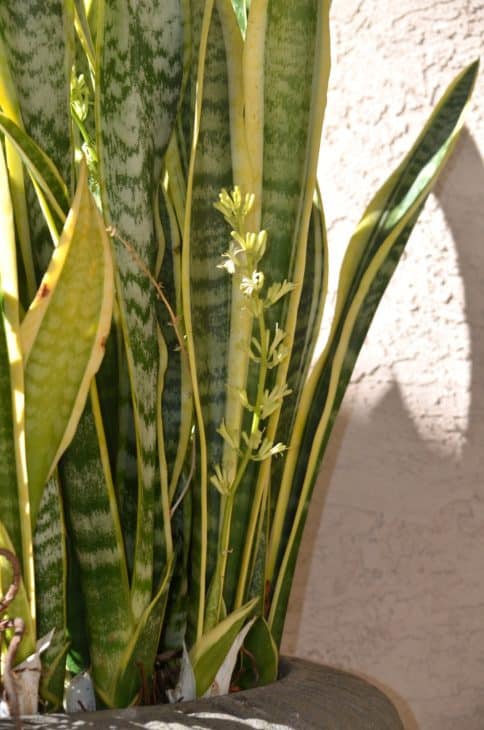
This is a famous house plant with yellow striped leaves and tiny green flowers that smell sweet. The snake plant can grow in low light conditions and has been used in herbal remedies, but it is poisonous if eaten. If the plant is taken in high quantity, it can cause nausea and vomiting. It can also numb the tongue and swell the throat. This plant is quite toxic to cats and dogs.
19. Poison Sumac (Toxicodendron vernix)
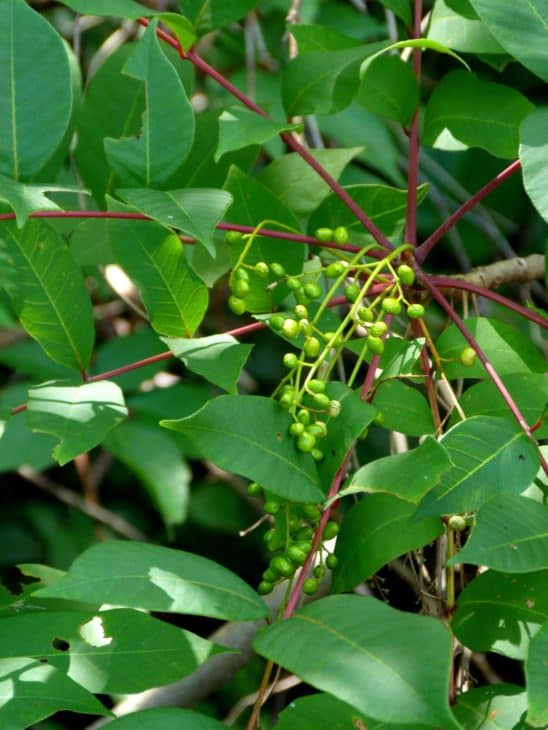
This is a woody shrub and is about 9 m tall. It is also known as thunderwood and is found in the southern parts of America. This plant contains a resin called urushiol, which is irritable to the skin and mucous membrane of humans. Even the smoke coming from a burning plant may cause a rash to the linings of the lungs. Poison Sumac is known to cause fatal respiratory difficulty.
20. Azaleas (Rhododendron)
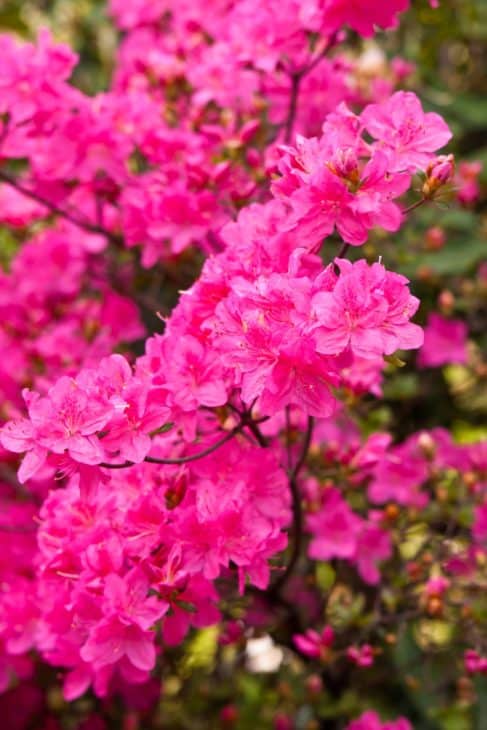
This plant is a sub-species of the rhododendron family. These shrubs look very beautiful in the spring gardens with their captivating colors. Azaleas can be toxic, and its poison can cause low blood pressure and irregular heartbeats. It can be life-threatening, and the toxic substances in it can enter the body if someone eats the leaves, nectar, or even flowers.
21. Giant Hogweed (Heracleum mantegazzianum)
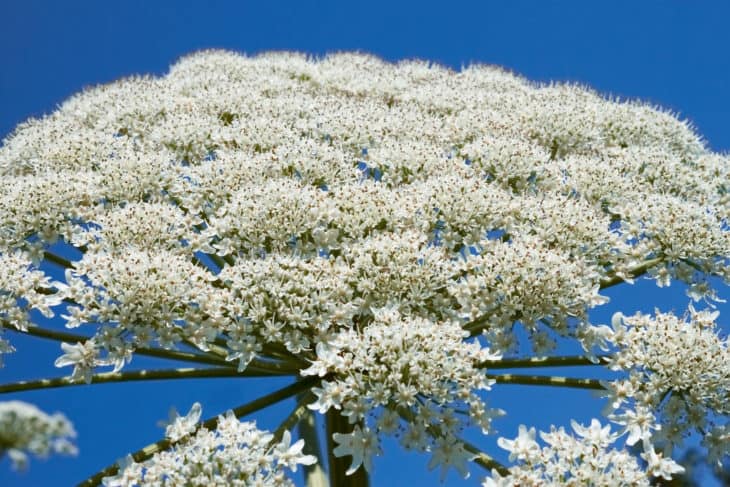
This is known as giant hogweed and is native to the western region of Eurasia. It came to Britain as an ornamental plant and then spread to other areas in Western Europe. Its sap is toxic and causes a condition in humans which causes blisters and scars. Furanocoumarin is the chemical that leads to these reactions in humans. It is found in every part of the plant, making the giant hogweed an excessively poisonous plant.

